The Pottery Barn Kendall Crib has been on my list of the best non-toxic, sustainable cribs for a few years. I recently removed it from our recommendations, however. Here’s why I no longer recommend the Pottery Barn Kids cribs.
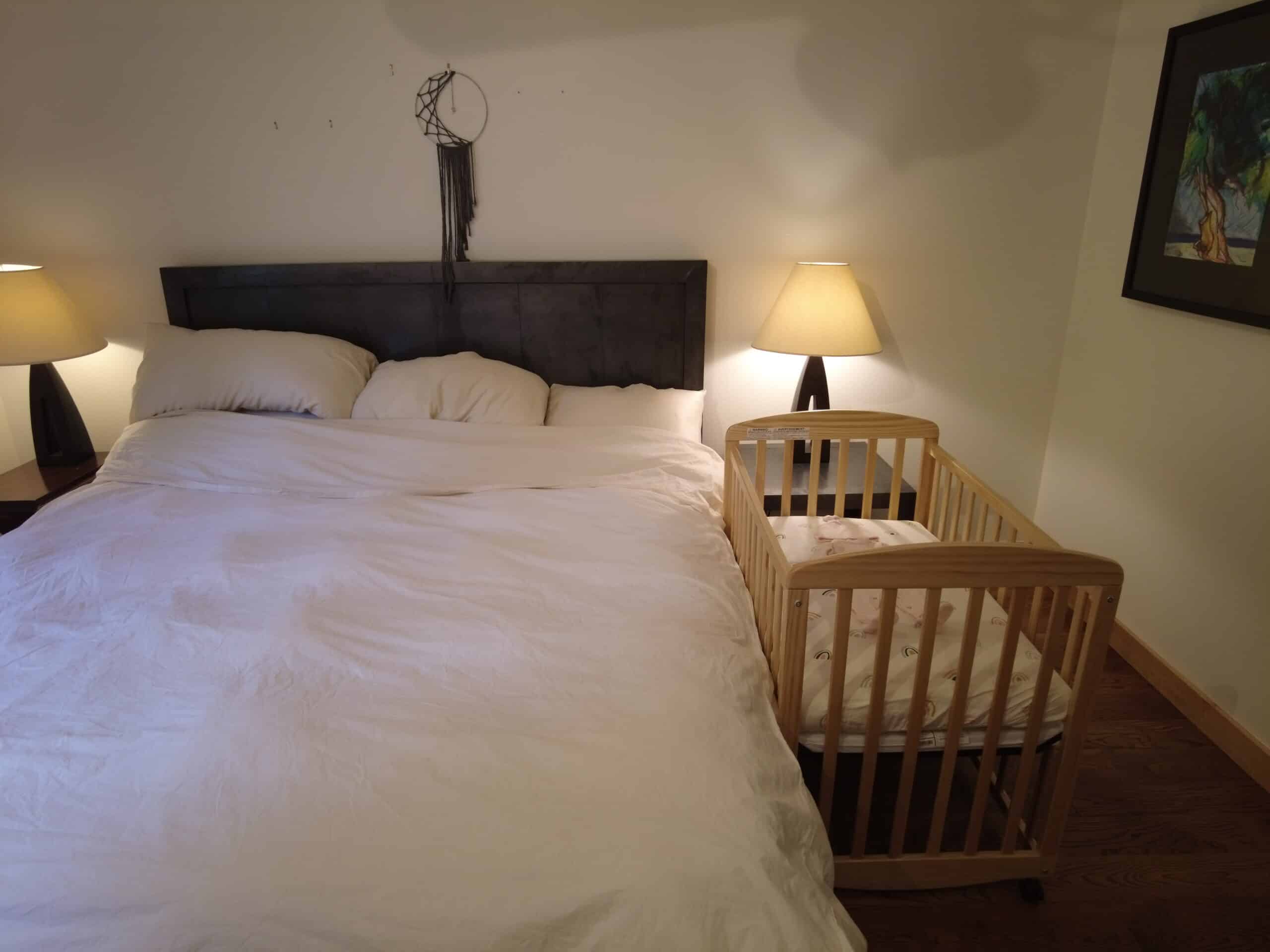
Table of Contents
The Pottery Barn Kendall Crib made my list of the best non-toxic cribs a few years ago but it was never my top choice. This was largely due to the high price and plastic teething rails.
More recently, I discovered another major downside to the Pottery Barn Kendall Crib, prompting me to remove it altogether from my recommendation list.
Here’s the reader comment that tipped the balance:
Recently, I learned that Pottery Barn Kids will not issue or sell replacement hardware for this crib. Defective hardware may be replaced up to 1 year after purchase. The hardware type and size are not sold at local US hardware stores. Quite difficult to find suitable replacement hardware. If a bolt is lost or damaged, Pottery Barn Kids will likely not offer support.
Jacqueline L.
I really appreciate Jacqueline reaching out to let us know about this issue with Pottery Barn Kids.
The Pottery Barn Crib isn’t sustainable
Longevity is a major factor in sustainability. If a crib or other product is at risk of becoming unsafe and unusable after just a year, it’s not sustainable.
The longer a crib is in use, whether by the same family or after being resold or gifted, the lower its overall environmental footprint. Having misplaced the hardware for our crib more than once (despite taping it to the crib!), I know the peace of mind that comes from knowing I can easily replace hardware if necessary.
Most cribs have standard hardware you can easily replace, whether from a local hardware store or through the original manufacturer. This makes them much more sustainable from a lifecycle standpoint than a crib like the Kendall, where it’s difficult, if not impossible, to replace hardware after just one year.
The Kendall Crib and 4-in-1 conversion crib to day bed includes a lot of hardware. Some you’ll need right away to put the crib together. The other pieces you’ll only need in a few years, when converting the bed to a toddler bed and then a full bed. As such, it’s easy to misplace these pieces, and Pottery Barn Kids doesn’t offer replacements for sale.
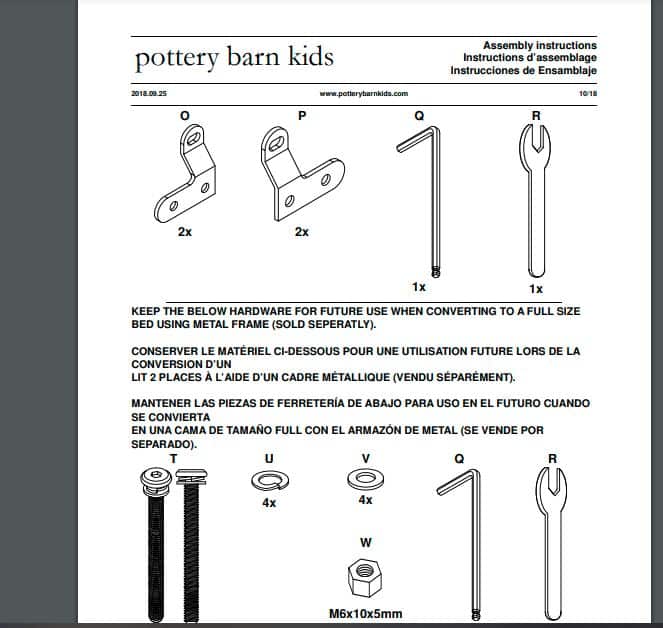
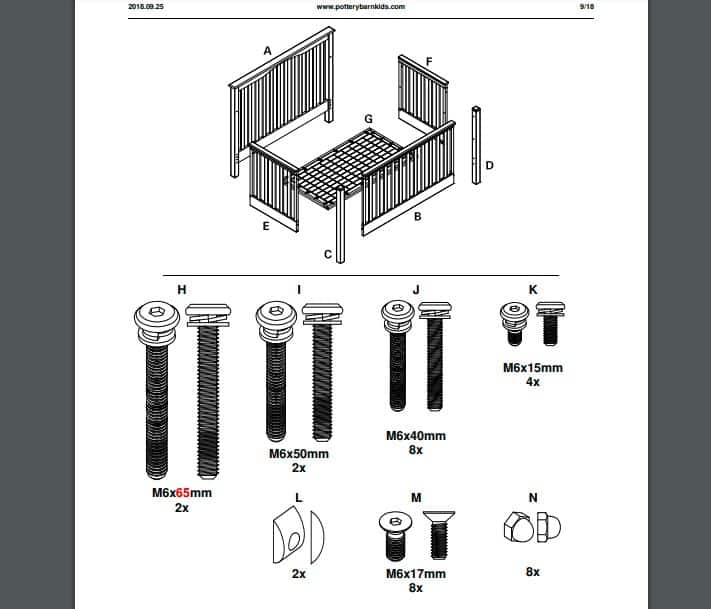
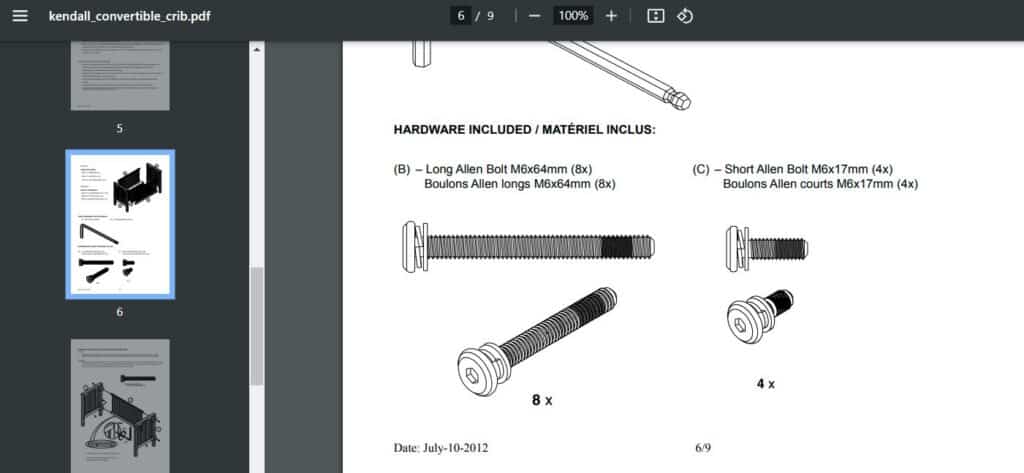
May lack robust support
The Kendall Crib has metal mattress supports, rather than wooden slats or a wooden board. This kind of metal support structure is more prone to sagging and strain, which may make the crib unsafe over time.
If you intend to use this crib for multiple children or older and heavier toddlers, you may want to reinforce the base. According to Pottery Barn, the crib is rated to a maximum weight of 50 lbs. This is similar to other cribs.
If you co-sleep with your toddler (whether you plan to or not!), this crib, even when converted, won’t support your weight.
In contrast, the IKEA Sniglar toddler bed (which costs less than $100) and is arguably more sustainably made, has a weight limit of 220 lbs. I have spent many hours helping my toddler sleep on the IKEA Sniglar toddler bed and it easily holds our combined weight of just under 200 lbs. (Make sure your child’s mattress is also rated to support adult weight.)
Paint chipping
Many folks love their Kendall Crib, but one of the most common complaints I’ve seen is that the paint chips very easily.
The white version of the crib seems to be particularly vulnerable to chipping. And once the chipping starts, that does rather ruin the luxury aesthetic of this expensive crib.
My advice is to go for the ‘weathered white’ or ‘seadrift’ options, which have minimal paint.
Because the crib is Greenguard Gold certified, we can be reasonably assured that the paint and stain don’t contain anything too egregious. Still, this certification isn’t a guarantee that no toxic chemicals were used in making the crib. For that, we’d want to see Made Safe™ certification or an ECO-Institut certification.
Plastic teething rails
The Kendall Crib comes with built-in plastic teething guards on the top rails of the crib. These can’t be removed, meaning your kid will inevitably chew on some plastic if you use this crib.
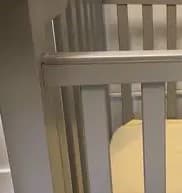
What I really dislike about Pottery Barn is that you can’t see these plastic pieces in any of the product photos. This is horribly misleading. The parts are built-in and already in place when you unbox the crib; they’re not an optional piece. So the crib as seen in photos is not what you’ll actually end up using.
Because I don’t have the Pottery Barn crib at home, it’s been hard to track down a photo of the plastic rails. Here’s the best I’ve found, taken from an online marketplace shot of the crib.
The plastic does meet safety standards for children’s items, even in Canada (where rules are stricter than in the U.S. for toxic chemicals). That means no regulated phthalates, for instance. However, this is still a totally unnecessary plastic exposure that’s unavoidable with this crib.
Personally, I wouldn’t use this crib simply because of the plastic teething rails. Even if it were more affordable and had easy to replace hardware.
$$$ Too expensive for most families $$$
At around $600 (in 2024), the Kendall Crib costs more than three times the price of the IKEA Sniglar Crib and nearly twice that of the DaVinci Kalani Crib.
In short, this is a very expensive softwood crib with a price more akin to a hardwood crib.
As such, the investment is only worth it for most families if there’s a good chance you’ll be able to use it for several babies or resell it to recoup some of the cost. If you misplace the hardware, though, you may have to ditch the whole crib and buy something new.
Final thoughts on the Kendall Crib
The Kendall Crib is Fair Trade Certified, Greenguard Gold certified, and made with a more robust softwood (poplar) than most (pine) cribs. This is why it made my list originally.
However, due to the plastic pieces and limited ability to source replacement hardware, combined with the high price and potentially short lifespan of the Kendall Crib, I’m bumping it off my list of top picks.
What’s my top choice for a non-toxic crib? The Oeuf Sparrow – see my review. For other recommendations, check out the full list of eco-friendly cribs. Need a toddler bed? Lydia offers her top choices here.